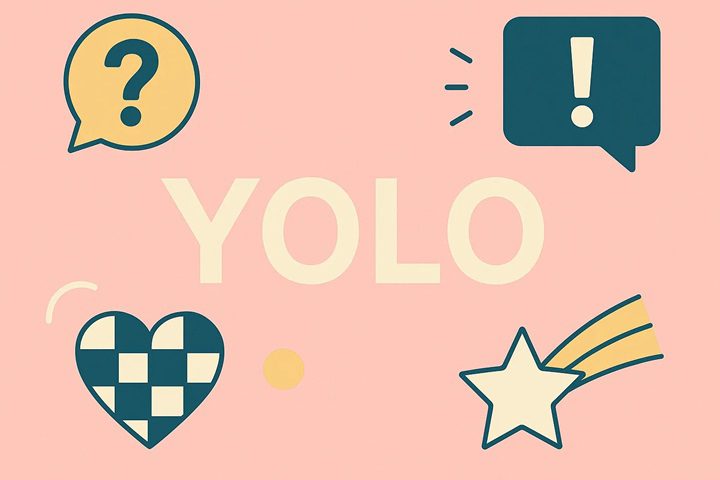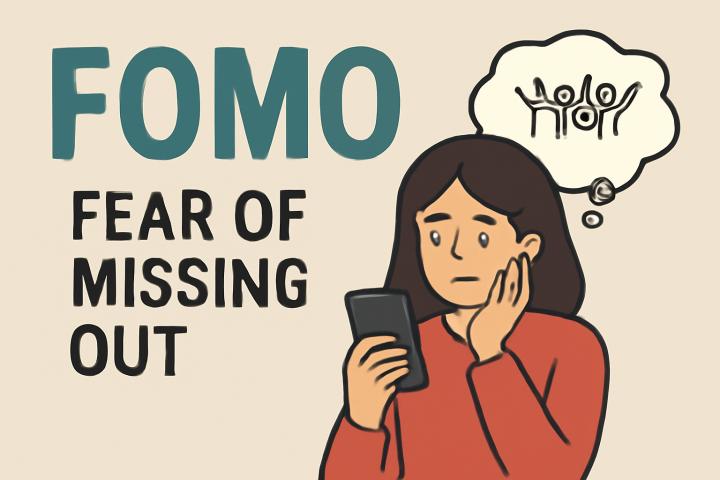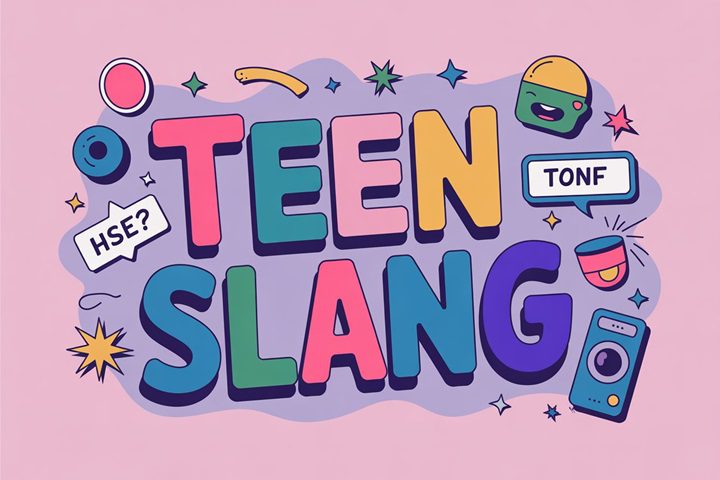The slang term “YOLO” summed up the attitude of a young generation towards life: daring, spontaneous, and driven by the notion that you only live once. In an age of social media and instant gratification, the term “YOLO” has moved beyond its original connotation as slang. This article examines the full meaning of YOLO, not only as a catchphrase that promotes a fun or impulsive lifestyle, but also as an expression of modern values, digital culture, and individuality. Understanding the deeper implications of the term can help parents, educators, and youth shape behavior, manage risk, and find a balance between living boldly and acting responsibly.
What does YOLO mean?
The word YOLO is an acronym for “You Only Live Once.” Though at its simplest, it conveys the idea that life is too short to be lived with too much fear or hesitation. It urges people to take risks, experience new things and step outside their comfort zones.



The connotation of the term is very dependent on the context. In personal chat or online, the YOLO meaning in chat can be used to justify spontaneous actions. For example, taking a last-minute trip, wearing something really bold, or taking social risks. However, the term also has a philosophical depth, a timeless reminder to make life meaningful rather than waste it on trivial pursuits.
Synonyms & the meaning decoding
The slang around YOLO often relates to other similar terms used to describe emotional or social behaviors in the digital age. These related acronyms help decode different attitudes related to risk, regret, or social comparison.
| Slang term | Stands for | Meaning |
| FOMO | Fear of Missing Out | Anxiety about missing experiences others seem to enjoy. |
| FOPO | Fear of Other People’s Opinions | A tendency to overvalue external validation and judgment. |
| MOMO | Mystery of Missing Out | Curiosity and unease about the unknown things others are doing. |
| JOMO | Joy of Missing Out | A peaceful satisfaction from disconnecting and ignoring social pressures. |
| ROMO | Relief of Missing Out | Contentment with missing events that turn out to be stressful. |
| FOBO | Fear of Better Options | Difficulty making decisions due to endless alternatives. |
| COMO | Comfort of Missing Out | A calm feeling linked to the conscious decision to rest or withdraw. |
| BOGO | Buy One, Get One | Similar but not emotional slang. It illustrates marketing lingo. |
Recognizing these variations helps us to understand the meaning behind them, YOLO, FOMO, JOMO, etc, that young people use to talk about their identities, confusion, or maybe their fear.
Don’t risk it for the likes – YOLO on the Internet safely.
The origin of YOLO
Although YOLO surged to massive popularity after a 2011 song “The Motto” of Drake, a Canadian rapper, the phrase itself is older than the concept of modern social media. The meaning and sentiment of YOLO is parallel to that of classical philosophies, such as the Latin phrase carpe diem (“seize the day”) from the Roman poet Horace and the medieval reminder memento mori (“remember you must die”), both stressing the impermanence of life.
Drake’s use of “YOLO” turned an ancient philosophical concept into a viral pop culture expression. Between 2011 and 2013, it became a defining motto on platforms like Twitter and Instagram. Memes, clothing brands, and hashtags took it into the digital vernacular, where hashtags like #YOLO came to mean young confidence and impulsive adventure.
Studies in media linguistics point out that the spread of YOLO is indicative of “cultural digital acceleration,” that is, how rapidly online communication forms a new set of norms of expression. It’s now a relic in Gen Z’s lexicon, used both humorously and earnestly to capture moments of courage or recklessness.
How to use YOLO in texting and social media?
To understand what YOLO means in texting, one must look at the context. It is common to see it in casual messages, captions, or in reply to a message in order to highlight a decision that is driven by confidence, risk-taking, or emotional release.
In casual communication
People tend to use YOLO as an excuse to justify adventurous or spontaneous behavior — whether it is trying a new hobby, making a spontaneous trip, or making an unusual choice. Similarly, the meaning and use of Yolo slang often conveys a sense of recklessness and spontaneity.
Examples:
- “I signed up for this weekend to do skydiving, YOLO!”
- “I spent an entire night watching the sunrise, YOLO.”
Private messages for encouragement
YOLO can also be used to convey assurance or encouragement to someone who is facing challenges and negative emotions, and to share positive beliefs.
Examples:
- “You should go talk to them. YOLO, nothing to lose.”
- “Apply for that job even if it is scary, YOLO.”
YOLO culture on social media
On platforms such as Snapchat, TikTok, and Instagram, YOLO takes the form of visual storytelling. Users use the hashtag #yolo alongside posts about bold experiences. These can be cliff diving, solo travel, new looks, or gaining the courage to overcome fears.
For example, the former Snapchat YOLO app, which promoted anonymous feedback between teens, helped spark discussions about the precarious nature of fun and freedom online and personal boundaries. On TikTok, YOLO is used in captions to celebrate freedom or resilience, while Instagram posts often use it to accompany luxury, creativity, or emotional authenticity.
In the comment sections and the direct messages, the YOLO definition mostly pops up as a friendly response, “Go for it, YOLO!” promoting encouragement in digital communities.
How do YOLO and FOMO impact teens’ minds and behavior?
To gain a deeper understanding of Gen Z’s emotional and social world, focusing solely on the meaning of words is simply not enough; while YOLO vs FOMO convey distinct mental frameworks, they also reflect how social media affects the emotional health, risk-taking, and self-esteem of youth.
YOLO: The existential perspective
The YOLO mentality aligns with the philosophical concept of existentialism. It is the idea that life is valuable because of the choices that individuals make. This outlook promotes self-discovery, independence and resiliency. Teenagers living by YOLO can also become more open to challenges. These challenges can be trying new skills, speaking up for something they believe in, or facing their fears.
However, without balance, YOLO can excuse irresponsibility as well. And acting only on impulse, driving fast, spending too much money, or seeking validation on the Internet can lead to regret instead of fulfilment. This is proof of why it is essential for parents and educators to have a conversation about the difference between wise risk-taking and reckless behavior.
FOMO: the psychological reaction
In contrast, FOMO (fear of missing out) refers to anxiety brought on by comparison of one’s life with others’ lives.



The stream of carefully curated social media posts they keep seeing makes many teens feel left out or inadequate. Research from Science Direct mentions, “The tendency to experience FOMO could be viewed as a predisposing factor for developing a social media usage disorder which, in turn, could have adverse consequences on daily life and productivity.”
Unlike the “live boldly” attitude of YOLO, FOMO feeds on worry and self-comparison. Teens seeking relevancy or likes make decisions not out of happiness but out of insecurity. Whereas YOLO is action-encouraging, FOMO is a passive observer and a mental fatigue action.
Interconnected Influences
Both YOLO and FOMO reveal the emotional complexity of Gen Z’s digital life. Social media only feeds these feelings; the same post tagged #YOLO may spark excitement for one viewer and FOMO for another. Recognizing these patterns helps adults guide young users onto healthy ways of looking at things and developing quality experiences, versus image-building and virtual reality.
How to support your child and talk about slang?
Knowledge of words like YOLO can open the door to understanding how youth construct values, assess risks, and communicate online. Instead of disparaging slang, adults can make it a great opportunity for good conversation. From there, they can:



Promote critical thinking and self-awareness
Teach children to distinguish between dangerous and unsafe thrills and destructive impulsiveness. Foster exploration, such as participating in a talent show or a sports team, while still promoting safety. Using YOLO as a teaching tool can turn it from a license for recklessness and into a philosophy for growth and learning.
Encourage open communication
Teens benefit if parents or teachers empathize with the expression of emotion through slang. Open questions, such as What was your reasoning behind that decision of YOLO? or “Did it not make you feel good afterwards? This helps to avoid defensive reactions and helps establish trust.
Guide online behavior and safety
Discuss how fashions in slang can affect things done online. Promote privacy awareness and encourage them to consider before posting or sharing sensitive information using popular hashtags. Parental control tools like FlashGet Kids or digital well-being settings can help parents monitor children’s app use and online activities without compromising trust.
Encourage face-to-face socializing
Balancing interactions between the virtual and the real helps reduce FOMO and validation-seeking behaviour. Create real pleasure and human interaction through volunteering, sports, or making something to get people confident off-screen.
Keep in touch with digital lingo
Language evolves quickly. Staying on top of social slang like YOLO, FOMO, and other Gen Z terms helps you understand youth culture rather than fear it. Schools and family talks can be enriched with the digital literacy programs on responsible trends and communication habits.
Identify red flags and mood swings
Impulsive statements such as “YOLO” coupled with withdrawal, sadness, or extreme behaviours may be an indication of deeper emotional needs. Watch out for sleeping and eating habits or social changes. Seeking mental health services at an early age makes one more resilient and emotionally intelligent.
Final words
The meaning of YOLO goes far beyond its origins as slang. It conveys an eternal message about human choice, courage and purpose in a fast-paced digital age. For teens, YOLO is both a source of inspiration and a temptation. It is a drive to experience the possibilities of life, but also a test of responsibility and self-control.
Parents and educators play an important role in shaping how young people interpret this message. The open and respectful discussion of slang by adults can transform popular, trending language into an educational opportunity on values, identity, and safety.
Finally, the most appropriate way to live the YOLO spirit is to live free while also being health-conscious, community-focused, and long-term-oriented. Living boldly should never translate to living recklessly. True fulfillment is experienced through meaningful choices that respect one’s dreams and future.

